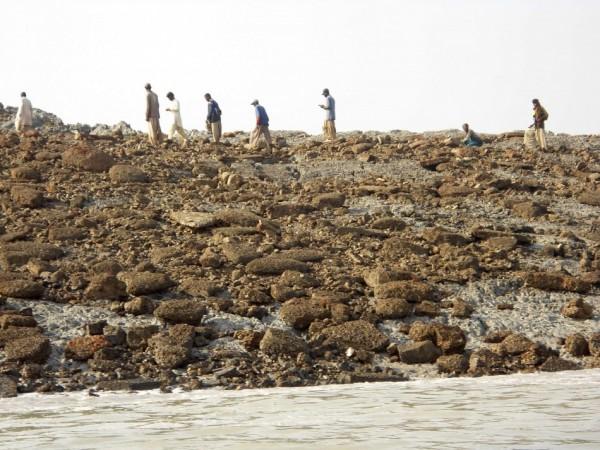
A 7.8-magnitude earthquake that struck the western part of Pakistan on Tuesday resulted in the formation of a new island in the Arabian Sea near the Gwadar port.
Television footage showed images of a rocky land rising above the sea level. The newly formed island is stretched about a mile off the coast and is about 100 feet in diametre, according to reports.
Scientists are now trying to study the formation of the island and are considering collecting a sample of the material that formed the island.
Zahid Rafi, principal seismologist for the National Seismic Monitoring Center, confirmed the formation of the island and said the event is "not surprising" given the intensity of the earthquake.

However, John Bellini, a geophysicist with the US Geological Survey, said it is not very common to see such land masses emerge from a quake. He added that other factors like tides could have helped prompted the emergence of the island.
John Armbruster, a seismologist at the Lamont Doherty Earth Observatory at Columbia University, told NBC News that mud, sand and water which flowed upwards during the quake may have formed the island.
Scientists say that such sudden islands might exist for years or eventually submerge in the waters. Locals of the region said that a similar event happened during an earthquake in 1968, that resulted in the emergence of a new island which stayed for about a year.
The newly formed island off Pakistan's southern coast is reportedly due to the natural force below the sea level. Researches throughout history showed that there have been multiple occasions where islands have emerged or disappeared.
According to a research by Steve Nelson, a geologist at Brigham Young University, the Hawaiian Islands are facing erosion because the ground water is forcing the island to dissolve from within. The mountains of Oahu, Hawaii, will be eventually levelled into a Midway island.
Volcanic eruptions have also formed isles like Surtsey, an island situated off the southern coast of Iceland. It was formed during a volcanic eruption on 14 November 1963 which originated 130 metres below sea level.
Tuesday's quake in Pakistan's south-western province of Balochistan has killed more than 300 people and injured hundreds. The tremors were felt as far away as the Indian capital of New Delhi and the Gulf States of Oman and United Arab Emirates.

















